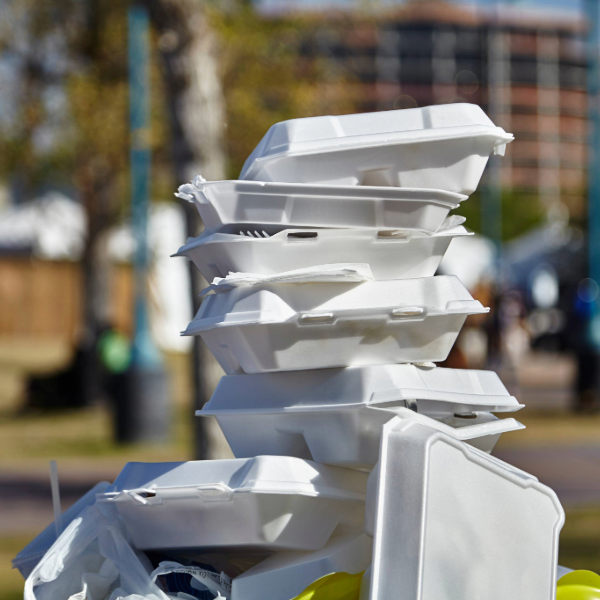January 10, 2022

Simply put, restaurant inventory management is the monitoring and counting of all aspects of restaurant service. It’s a means of inventory tracking, item control, and food waste management. In essence, handling your day-to-day inventory is akin to managing your revenue. Keeping a list, spending time doing thorough counts, and checking your sitting inventory can help you quickly identify overspending, spillage, theft, mistakes, and more.
Even if you’re well into the restaurant game, it’s never too late to begin implementing inventory management tools. What’s worse is not implementing a strategy and wasting time and resources. That’s why, starting an inventory management plan now can actually be a money-saving game-changer down the road.
Key Restaurant Inventory Management Categories
When designing your inventory management strategy, keep in mind that a thorough list includes all the physical items needed to execute service like food, pots, blenders, and employee uniforms. While every restaurant is unique in its offerings, there are standard categories that every establishment shares. For example:
- Food
- Spices
- Dry goods
- Dining ware
- Beverages (including alcohol)
- Cooking equipment
- Linens and kitchen towels
- Employee uniforms
To create an accurate inventory master sheet, go through every aspect of service–from eco-friendly to-go containers to menu items to bulk beverages and cutting boards. Keep food, drinks, and non-food items separate for ease of budgeting and tracking.
What is the Importance of Inventory Management?
In business establishments like bars and restaurants, going through and cataloging all the necessary equipment it takes to run your operation can be a daunting task. Some owners might consider the project a hassle. However, knowing and tracking your inventory has myriad benefits beyond knowing when to re-up your restaurant supply store orders.
- Mitigates Unnecessary Food Waste: 10 percent of food is lost or wasted before it even reaches the plate. Monitoring your food purchases versus your food output can help you identify the over-purchasing of certain items. Proper food inventory management lets you see what is being thrown out, what can be repurposed, and what might not be a high-selling item. Not only does this help you save on food costs, but minimizing food waste can help increase your customer base.
- Helps Maintain Robust Cost of Goods: Keeping your cost of goods sold percentage within a normal range is vital to retain profits. If food, beverages, or other items are lost or spoiled, that can significantly affect your margins.
- Keeps Customers Happy: If you find yourself running out of dishes regularly, you run the risk of losing your customer base. Inventory can assist in making sure all your most popular ingredients are in-house when it matters most.
Inventory Management Technology and Tools
Technology is making restaurants more profitable. From contactless ordering systems to food safety technology, operations are becoming more and more streamlined. Inventory management technology and tools have changed the way restaurants oversee supplies and resources. There are many tools out there that can help manage inventory directly or help streamline your operations to free up your team's time to dedicate time to inventory management.
- Revel Systems: This POS inventory management software can help with ingredient-level inventory tracking, recipe costing, and reorder alerts. The system can create purchase orders and automatically updates inventory counts upon purchase order receipt.
- Square for Restaurants: Perfect for food trucks and small operations, this POS offers basic inventory features and offers low-stock alerts. Square for Restaurants includes reliable mobile card readers that even work without a connection, making it a popular choice for mobile food carts.
- TouchBistro: This popular POS system tracks food inventory stock and costs to the ingredient level and lets you build recipes for easy cost tracking per menu item making it a great option for small operations and cafes looking for recipe cost tracking.
- Toast: Turn tables faster, improve ordering efficiency and strengthen customer loyalty. Empower staff with fast, intuitive ordering workflows and Toast Go® handhelds, and Order & Pay at the Table.
Creating an Effective Food Inventory Management System
- Maintain a consistent schedule: Create an inventory schedule and stick to it. Keep in mind that you might want to track different ingredients on different schedules. For example, you might want to count perishables more frequently than dry goods. By keeping a steady schedule, you will start to see patterns that will help adjust your menu costs and ordering.
- Keep a food waste log: While a restaurant inventory sheet can help you see items coming in and going out, a food waste log can help you know which ingredients and how much are being wasted.
- Adhere to the “First In, First Out” method: Arrange your coolers, freezers, and storage areas by “First In, First Out.” Place older ingredients in front, and utilize those first to curb food waste.
- Task the same employees for inventory tracking: To promote consistency designate a small group of employees to take stock. For example, your bar manager for beverages, chef for kitchen, and service manager for dining ware.
Buy Bulk Wholesale Food and Beverages at US Foods CHEF’STORE
By nailing down what's flying off the shelves and what's gathering dust, you'll be a pro at ordering just the right amount and slashing excess spending. CHEF’STORE stocks exceptional products at competitive price points to further help you manage food costs and delight your customers. Stop by one of our many nearby locations, or reach out to our teams to learn more about our business resources and tools available.
VIEW OR DOWNLOAD OUR RESTAURANT INVENTORY MANAGEMENT CHECKLIST



